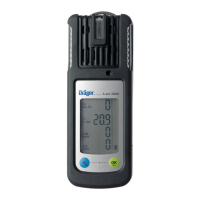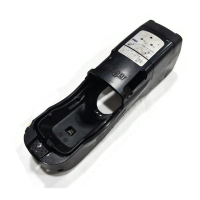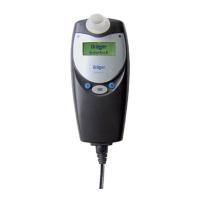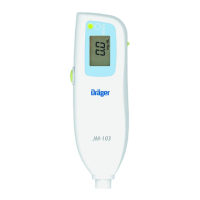73
Калибровка и регулировка инструмента
– Перед калибровкой калибруемый сенсор должен пол
ностью разогнаться! Время разгонки указано в специфика
ции сенсора; см. также сообщения на дисплее.
– Некоторые сенсоры (например, сенсоры на кислород) не
калибруются, а проверяются функцией » Zero point « (Ка
либровка нуля). Данная функция не выполняет калибровку,
так как эти сенсоры не требуют калибровки нуля.
– Для критических приложений:
Интервал между калибровками определяется согласно EN
50073* и/или EN 455444**) и любыми надлежащими госу
дарственными нормативами.
Соблюдайте последовательность операций!
Сначала проверьте значение точки нуля. При необходимос
ти откорректируйте точку нуля, затем немедленно проверь
те и при необходимости отрегулируйте чувствительность.
– Никогда не калибруйте чувствительность до калибровки
точки нуля.
– Сначала откалибруйте EC сенсоры, затем IR сенсор и в за
ключение CA сенсор.
Для EC сенсоров:
Отрегулируйте точку нуля и чувствительность.
Для CATEx сенсора:
Отрегулируйте точку нуля для механизма каталитического
сгорания (LEL), точку нуля для теплопроводности (TC) и чув
ствительность для механизма каталитического сгорания
(LEL). Для измерений в диапазоне выше 100% НПВ CH
4
до
полнительно настройте чувствительность для механизма
теплопроводности.
*) EN 50073 – Руководство по выбору, установке, использованию и техническому
обслуживанию приборов для обнаружения и измерения взрывоопасных газов и
кислорода.
**) EN 455444 – Электрические устройства, используемые для непосредственного
обнаружения и непосредственного измерения концентраций токсичных газов и
паров – Часть 4: Руководство по выбору, установке, использованию и техниче
скому обслуживанию
Calibrating and adjusting the instrument
– Allow the sensor to be calibrated to warm up before starting
calibration! See the sensor data sheet and the display for the
required warmingup times.
– For some sensors (such as oxygen sensors), the function »
Zero point « is actually a test of the sensor. The function does
not execute calibration since the zero point of these sensors
does not need to be calibrated.
– For critical applications:
Define the calibration interval in accordance with EN 50073*
and/or EN 455444**) and any applicable national regulations.
Note the sequence of operations!
Always check the zero point first. Correct this if necessary and
then immediately check the sensitivity and correct it as neces
sary.
– Never calibrate the sensitivity before the zero point.
– First calibrate the EC sensors, then the IR sensors and finally
the CA sensor.
For the EC sensors:
Adjust the zero point and the sensitivity.
For the CATEx sensor:
Adjust the zero point for thermal tone (LEL), the zero point for
thermal conduction (TC) and the sensitivity for thermal tone
(LEL). For measurement of values greater than 100% LEL CH
4
also adjust the sensitivity for thermal conduction.
*) EN 50073 – Guidelines for selection, installation, use and maintenance of devices
for the detection and measurement of flammable gases and oxygen.
**) EN 455444 – Electrical devices for the direct detection and direct concentration
measurement of toxic gases and vapours – Part 4: Guidelines for selection, installa
tion, use and maintenance.
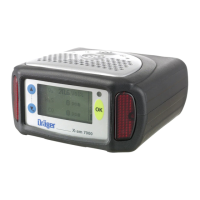
